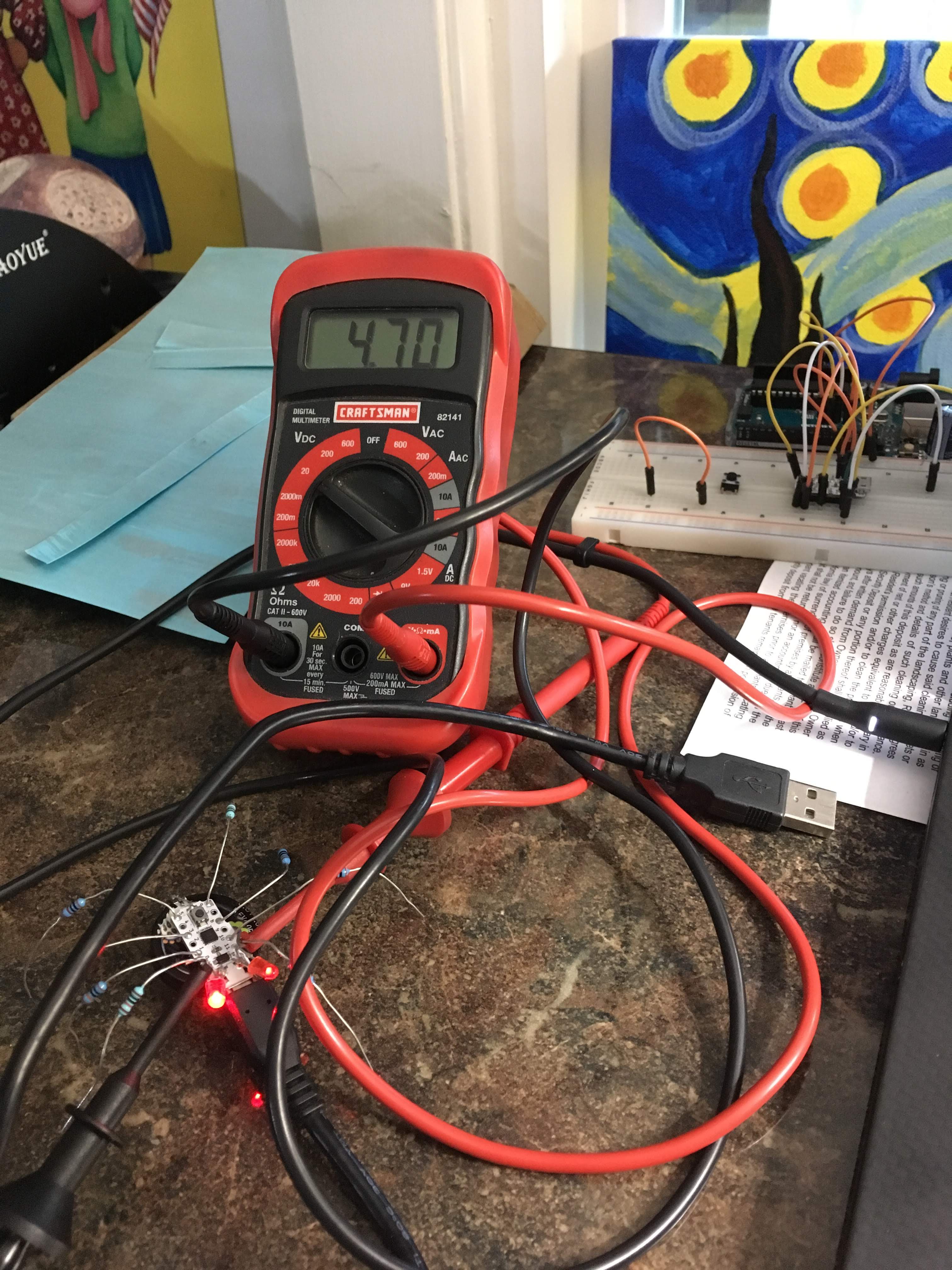Dan asked in the comments how long the super capacitor keeps this all running. Unlike a battery, the super capacitor has no capacity rating since it works differently. A battery usually has a very consistent voltage till it runs empty, and when you know how much current you are using, you can get a very close guess on how long you can run based on that capacity.
Super capacitors use electrical capacitance in farad to determine the amount of energy it can store. Unlike the battery, the super capacitor will drop voltage when energy is used, so farad is used to calculate the amount of energy you can use per 1 volt drop.
The ATtiny is a great micro-controller with a wide operating voltage (1.8-5.5V), and powering a red LED, where the voltage forwarding is around 1.8V is a perfect fit. Super capacitors with a voltage rating up to 5.5V are widely available.
A capacitor is safe and you cannot overcharge (like with a battery), as long as you stay below the voltage rating. In this case we are going to charge up to 5V from a USB charger.
We could do a bunch of calculations, but we don't really know how much current the LED's are using. They are on for a fraction, and they change brightness all the the time. The current will also change when the voltage is changing. Instead I will use a stopwatch and multi-meter to measure the voltage.

Last time I charged the spider was 2 days ago and after connecting the multi-meter, it was showing 0.89V. I started the timer as soon as I connected the USB cable to the computer to charge the spider, with the following reading in the first minute:
| Time (s): | Voltage (V): |
| 0 | 0.89 |
| 20 | 4.56 |
| 40 | 4.61 |
| 60 | 4.80 |
I left it connected till the voltage no longer changed, 4.8V after 10 minutes. I have to determine later how short the actual charging time could be, it might depend on the charging cable and charger.
After disconnecting I started taking readings till it ran out, with the following results:
| Time (H:mm:ss): | Voltage (V): |
| 0:00:00 | 4.80 |
| 0:00:20 | 4.76 |
| 0:00:40 | 4.74 |
| 0:01:00 | 4.73 |
| 0:02:00 | 4.71 |
| 0:05:00 | 4.65 |
| 0:10:00 | 4.55 |
| 0:20:00 | 4.38 |
| 0:30:00 | 4.22 |
| 1:00:00 | 3.80 |
| 2:00:00 | 3.08 |
| 3:00:00 | 2.51 |
| 4:00:00 | 2.04 |
| 4:30:00 | 1.83 |
| 5:00:00 | 1.60 |
After 5 hours the micro-controller was still running. In an entirely dark room you can still see the LED flash, but just barely.
 Sander van de Bor
Sander van de Bor
Discussions
Become a Hackaday.io Member
Create an account to leave a comment. Already have an account? Log In.